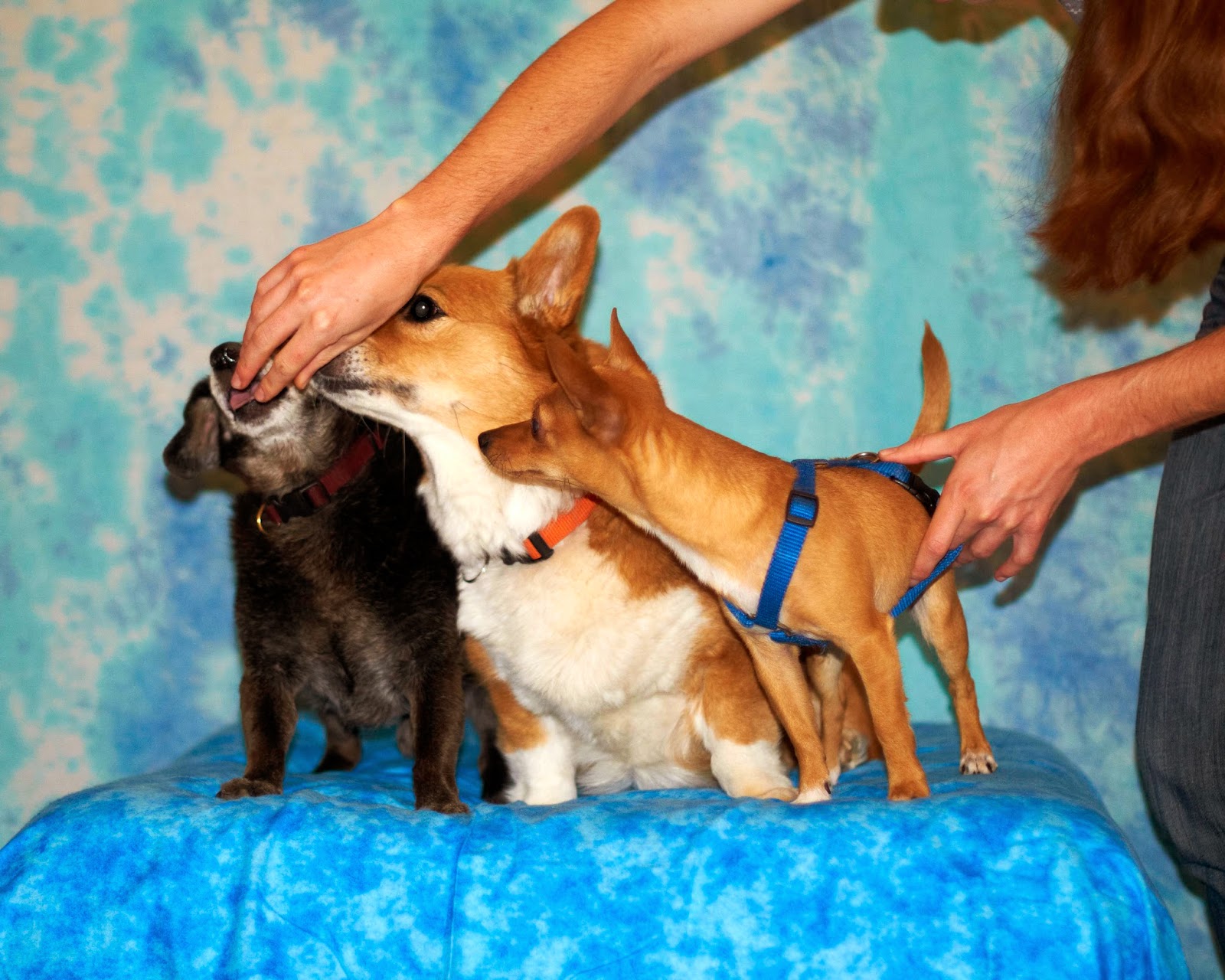If you've ever tried to photograph your own pets, you know it is easier said than done. Yes, you can get a picture, but chances are it will either be of a moving, blurry subject, will have a busy, distracting background, or the animal's eyes will be closed. I set up indoors for a quick photo shoot of my own dogs using a backdrop, indoor lighting, a built-in camera flash, and an assistant, and it still wasn't easy.
First off, most pet photographers find that their best shots are within the first ten frames when the pet is fresh with energy and interested in the new surroundings and activity. This one was taken while Stewie was exploring the set before my assistant stepped in.
You can choose between either waiting for the right moment to press the shutter release, or you can just fire away and have fun viewing what you caught on camera.
A yawn makes for a humorous shot that you can stick quotes on and share on social networking sites. I have a ton of these types of shots with my horses yawning or sticking out their tongues.
Each dog has its own personality that comes through in pictures. If you let the dogs move around, they will come up with their own poses.
An assistant is invaluable. The photographer needs to be ready with the camera at all times, so an assistant can collect the animals when they run off set, keep them focused on a toy or a treat, and make funny noises to get them to tilt their heads.
When doing fairly close up portraits of multiple subjects, it is important that the depth of field not vary too greatly or some subjects will come in clearer than others.
Some dogs always have gunk coming out of their tear ducts, and no amount of washing can get it off, so be prepared to digitally clean that up. When you have a subject with a scar or, in this case, a fatty tumor sticking out of his chest, ask the client if he or she would rather have it removed in the photo, softened in the photo, or left in as a part of the subject's persona.
The more subjects you have, the more work is involved in getting the shot.
Dog noses will always point where the food or toy is located.
If the assistant is standing up while the photographer is crouched down, the dog's eyes or heads will be pointed up. If the assistant crouches down, the eyes and heads will come down.
Try shots with the animals' attention in different locations. If you want the animals to look right into the camera, either have the assistant crouch or stand at the same level as the photographer behind the camera or the photographer herself needs to do something to capture their attention.
For pets that don't like to be picked up, you can throw a toy onto the set and capture them when they chase it. Make sure your camera is set to a faster shutter speed.
Some pets will eat the props...
...while others pose nicely with them.
Sometimes something as simple as the position of a paw can make or break a photo.
Lots of pets like to run right up to the camera to investigate it. That's when things get really silly.
Always try to focus on the eyes, but be careful using the flash at a short distance.
Keep things moving along, and keep the photo shoot short and sweet before your subject falls asleep.
But don't forget to take the shot if he does.
Subscribe to:
Post Comments (Atom)




























2 comments:
As difficult as it is you have the art of taking pet photos down to a science. :D I love them all!
Thank you!
Post a Comment